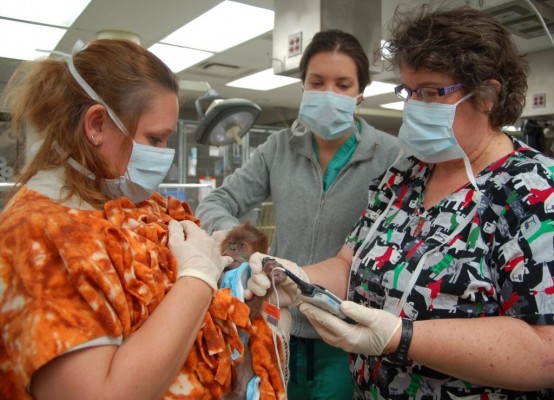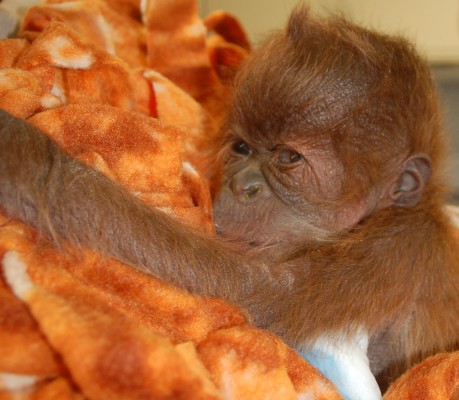Thanks to Jeff Edmondson and Kare 11 for this great piece on Como's newest addition!
Thursday, September 10, 2015
Como Zoo Staff Excited About New Giraffe
Wednesday, June 3, 2015
Como Zoo Named the Best Zoo in Minnesota
Como Zoo was recently named the best Zoo in Minnesota by Yahoo Travel! A big thank you to all of the staff, volunteers, and visitors who make Como such a special place!
For the full list of Zoos (and an adorable picture of Chloe) check out: https://www.yahoo.com/travel/go-wild-the-best-zoo-in-every-state-120496231352.html
Saturday, May 30, 2015
Wyoming Toad Update!
The Wyoming Toads are coming out of their hibernation! Once the toads awake from hibernation by gradually increasing the temperature, they will be introduced in pairs to breed for the season. If successful, each individual pair can lay up to 7,000 eggs at one time. These eggs, eventually hatching into tadpoles, will be shipped out to Laramie , Wyoming and back into the wild! This is just one of the amazing Conservation Projects Como Park Zoo and Conservatory are involved with annually.
Monday, April 20, 2015
Baby Pancake Tortoise Born At Como Zoo!
Wednesday, April 8, 2015
Hopping into Hibernation for a Spring Fling
Monday, March 16, 2015
Behind the Spines... Scenes Babies!
Spring must have sprung at Como Zoo! Our
Zookeepers and the education animal collection would like to welcome four
new baby African Four-Toed Hedgehogs to our collection! The four –toed African
Hedgehogs are just one of several species of small mammal that Como Zoo has in
its diverse collection that is used for educational programs and value added
events at the Zoo. The hedgehogs are often spotted with Educational
Interpretive Specialists and Nature Walkers (our teen volunteer program) around
zoo grounds; as well as with our Educators and Zookeepers in the classroom and
events. These little prickly friends have a love for insects and fruit; and
often ball up with spikes up in the air to protect their underside.
Tuesday, March 3, 2015
Como Zoo Brings Students On Week-Long Field Trip
Join us for a unique opportunity to move your classroom to Como Park Zoo
and Conservatory for a week of hands-on, interdisciplinary,
inquiry-based learning. Como education staff will partner with you to
deliver a program where students will use the scientific method to do
real-world learning about the plants and animals of Como. Teacher
training is provided and the program, including transportation, is free
of cost thanks to the generous funding from the Clean Water, Land, and
Legacy Amendment.
Tuesday, February 17, 2015
Kemala Is Helping Raise Awareness for Wild Orangutans!
Our Baby Shower may be over but there is still a lot everyone can do to help save wild Orangutans! Some experts estimate that at the current rate of
habitat destruction for palm oil, orangutans could face extinction in
as few as 10-15 years.
An easy way to find out whether or not the products you buy are orangutan-friendly is to download the FREE smartphone app from the Cheyenne Mountain Zoo.
The app includes more than 5,000 products whose manufacturers are
certified by the RSPO. Purchasing products from these companies helps
save orangutan habitat and lives!
Thanks to Sven Sundgaard and KARE 11 for the great story!
Tuesday, January 13, 2015
It’s a Girl! Como Zoo Welcomes Baby Orangutan
This is Markisa’s second required C-section, both of which were performed at the Veterinary Medical Center. “C-sections are very rare in that there are only about a dozen recorded within the International Orangutan Studbook that has tracked more than 1,200 births in captivity throughout history” said Como Zoo primate keeper Megan Elder, who also serves as the International Studbook Keeper for the World Association of Zoos & Aquariums (WAZA) and the Vice-Chair for the North America Orangutan SSP.
This is a very important birth both for Como and for the species. Markisa was recommended for breeding by the Association of Zoos and Aquariums (AZA) Orangutan Species Survival Plan (SSP) because of her status as one of the most genetically valuable female Sumatran orangutans in North America.
The delivery was attended by an assemblage of experts in human maternal health and consultant veterinarians from the University of Minnesota Veterinary Medical Center and the University of Minnesota Fairview Medical Center. Many of these individuals have been prepping for weeks for this procedure and several (Yasuko Yamamura, MD and Kirk Ramin, MD) consulted on Markisa’s last C-section. These included an obstetrical team of 14-16 individuals including professionals from the human and animal neonatal intensive care units, human maternal-fetal medicine, veterinary surgeons, veterinary technicians, veterinary anesthesiologists, a nutritionist, and a biosecurity supervisor.
Markisa is back at Como Zoo and recovering from the procedure. Her infant is currently in an ICU unit at the University of Minnesota Veterinary Medical Center in the care of Como Zoo primate keeper professionals. She is expected to return to Como Zoo within a day or two. The newborn female is being bottle-fed by Como staff during the time she is separated from Markisa.
Como Zoo plans to visually reintroduce the infant and her mother upon the infant’s return to Como. The reintroduction process may take several days to weeks.
The Association of Zoos and Aquariums governs a Species Survival Plan (SSP) for endangered species in captivity in the United States. The committee that supervises the SSP for orangutans set guidelines and recommendations each year to manage the captive population. “The SSP provides good zoo homes for each animal and helps to maintain a diverse gene pool with in the zoo community” explains Como Campus Manager Michelle Furrer. “The Zoo will work with the SSP to ensure that this animal becomes a healthy addition to the zoo population.”
About 200 orangutans are currently on exhibit in zoos throughout the U.S. Their native population, found primarily in Sumatra and Borneo, has dwindled due to commercial logging, agriculture, hunting and poaching –all of which put the species under the threat of extinction.
Sponsor the baby Orangutan! Sponsoring an animal makes a great gift – that keeps giving back. Animal sponsorships are a unique way to help Como Park Zoo and Conservatory with its wildlife conservation efforts. They support enhanced habitats and efforts to maintain the best care possible for the animals at Como Zoo. To purchase, visit Garden Safari Gifts at Como Park Zoo and Conservatory or call 651-487-8229.
Wednesday, January 7, 2015
Lil' Explorer Thursdays - One of the Best Activities For Families in the Winter!
Visit Roseville recently composed a list of the Top 10 Family Friendly Activities in the Winter and we were listed at #1!
Lil' Explorers is a FREE program from 10:00AM-noon each Thursday from September through
April. Perfect for the 1-3 year old to meet animal and plant visitors,
see story time, play games and many other fun activities. Different
theme each week!
Take a look at the full list HERE:



















